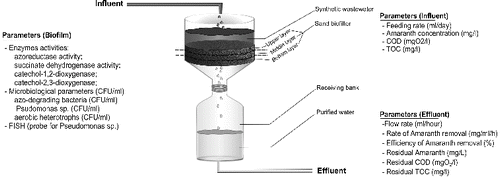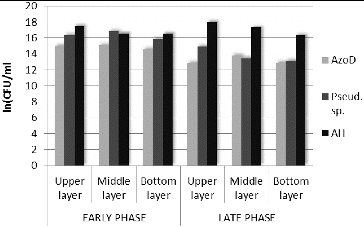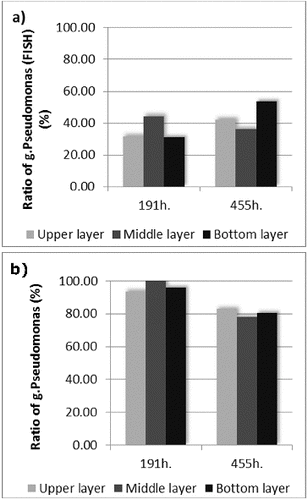Figures & data
Table 1. Mean values of the key technological parameters in the early and the late phase of the biofilter functioning.
Figure 1. Design of the experiment and description of the parameters of the water treatment process.

Figure 2. Distribution of the amount of key functional groups of microorganisms in the biofilm (azo-degrading bacteria (AzoD), aerobic heterotrophs (АН) and genus Pseudomonas (Pseud. sp.)). Data are obtained using plate count techniques.

Table 2. Key enzyme activities for Amaranth biodegradation: azoreductase (AzoR), succinate dehydrogenase (SDH), catechol-1,2-dioxygenase (C12DO) and catechol-2,3-dioxygenase (C23DO) in the early and the late phase of the process.
Table 3. FISH pictures of the biofilm community. Each object is shown stained with DAPI (blue colour) and with fluorescent probe specific for the genus Pseudomonas (red colour). The samples are taken from the three layers of the biofilter in the early (191 h) and in the late (455 h) phase of the experiment.

